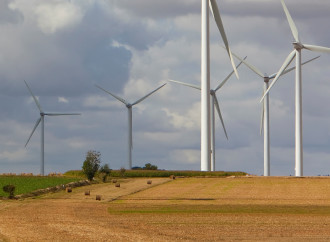What Does the Constitution Mean by “Natural Born Citizen?”
- December 4, 2023

The power grid in Texas is a little bit under the weather. A major heat wave has arrived just as the wind stopped blowing, creating a perfect storm for residents looking for relief from the blistering summer sun in the country’s second-largest state. As Bloomberg reports: Wind power — a key source of electricity in
READ MOREEnvironmentalists advocate wind power as one of the main alternatives to fossil fuels, claiming that it is both cost effective and low in carbon emissions. This study seeks to evaluate these claims.
Existing estimates of the life-cycle emissions from wind turbines range from 5 to 100 grams of CO2 equivalent per kilowatt hour of electricity produced. This very wide range is explained by differ- ences in what was included in each analysis, and the proportion of electricity generated by wind. The low CO2 emissions estimates are only possible at low levels of installed wind capacity, and even then they typically ignore the large proportion of associated emissions that come from the need for backup power sources (“spinning reserves”).
Wind blows at speeds that vary considerably, leading to wide variations in power output at different times and in different locations. To address this variability, power supply companies must install backup capacity, which kicks in when demand exceeds supply from the wind turbines; failure to do so will adversely affect grid reliability. The need for this backup capacity significantly increases the cost of producing power from wind. Since backup power in most cases comes from fossil fuel generators, this effectively limits the carbon-reducing potential of new wind capacity.
The extent to which CO2 emissions can be reduced by using wind power ultimately depends on the specific characteristics of an existing power grid and the amount of additional wind-induced vari- ability risk the grid operator will tolerate. A conservative grid operator can achieve CO2 emissions reduction via increased wind power of approximately 18g of CO2 equivalent/kWh, or about 3.6% of total emissions from electricity generation.
The analysis reported in this study indicates that 20% would be the extreme upper limit for wind penetration. At this level the CO2 emissions reduction is 90g of CO2 equivalent/kWh, or about 18% of total emissions from electricity generation. Using wind to reduce CO2 to this level costs $150 per metric ton (i.e. 1,000 kg, or 2,200 lbs) of CO2 reduced.
READ MORE